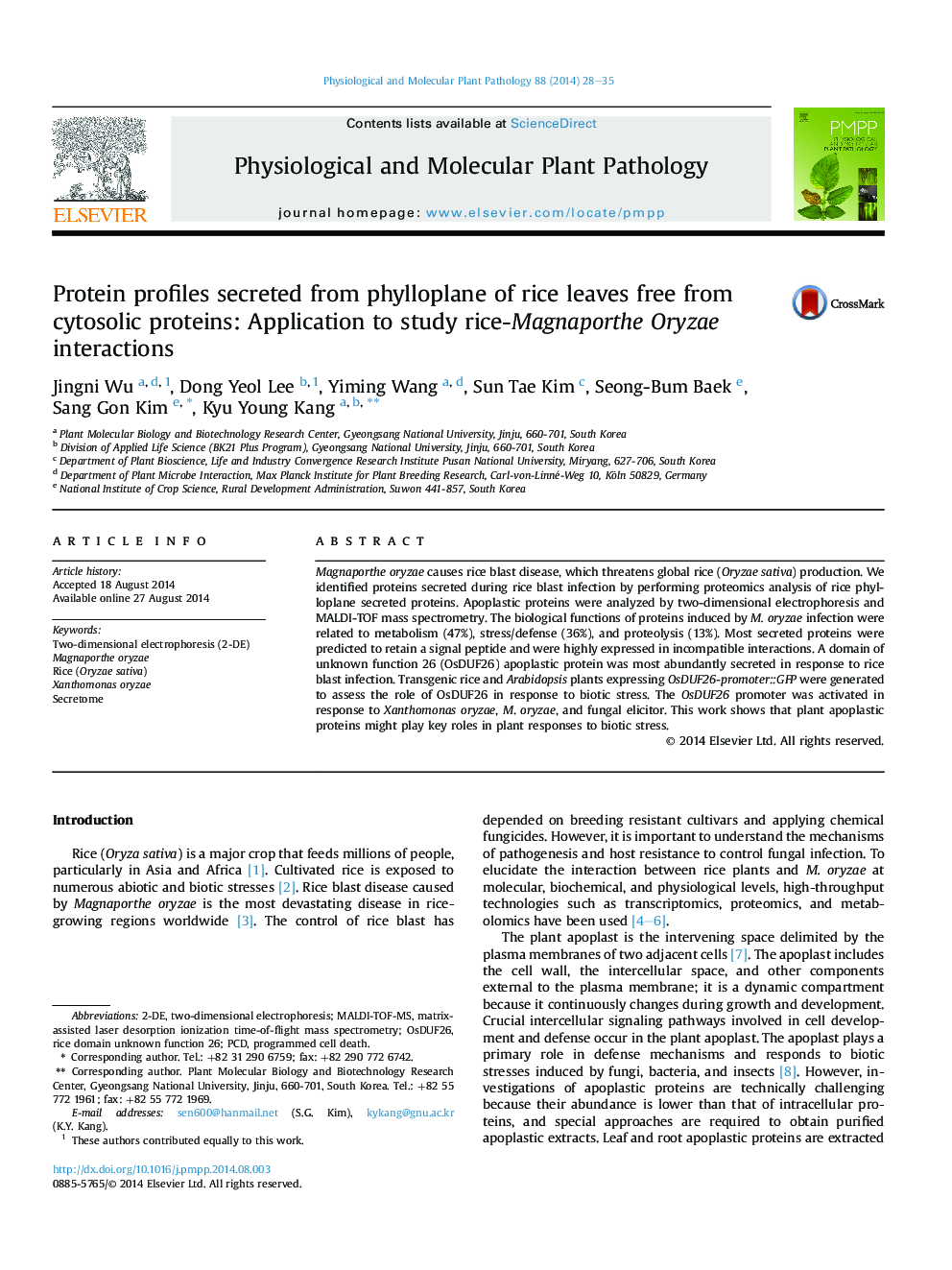| Article ID | Journal | Published Year | Pages | File Type |
|---|---|---|---|---|
| 2836299 | Physiological and Molecular Plant Pathology | 2014 | 8 Pages |
•We identified leaf apoplastic proteins secreted in response to rice blast infection.•The protein functions were associated with metabolism, defense, and proteolysis.•OsDUF26 was most abundantly secreted in response to rice blast infection.•Plant apoplastic proteins may play key roles in plant defense responses.
Magnaporthe oryzae causes rice blast disease, which threatens global rice (Oryzae sativa) production. We identified proteins secreted during rice blast infection by performing proteomics analysis of rice phylloplane secreted proteins. Apoplastic proteins were analyzed by two-dimensional electrophoresis and MALDI-TOF mass spectrometry. The biological functions of proteins induced by M. oryzae infection were related to metabolism (47%), stress/defense (36%), and proteolysis (13%). Most secreted proteins were predicted to retain a signal peptide and were highly expressed in incompatible interactions. A domain of unknown function 26 (OsDUF26) apoplastic protein was most abundantly secreted in response to rice blast infection. Transgenic rice and Arabidopsis plants expressing OsDUF26-promoter::GFP were generated to assess the role of OsDUF26 in response to biotic stress. The OsDUF26 promoter was activated in response to Xanthomonas oryzae, M. oryzae, and fungal elicitor. This work shows that plant apoplastic proteins might play key roles in plant responses to biotic stress.
